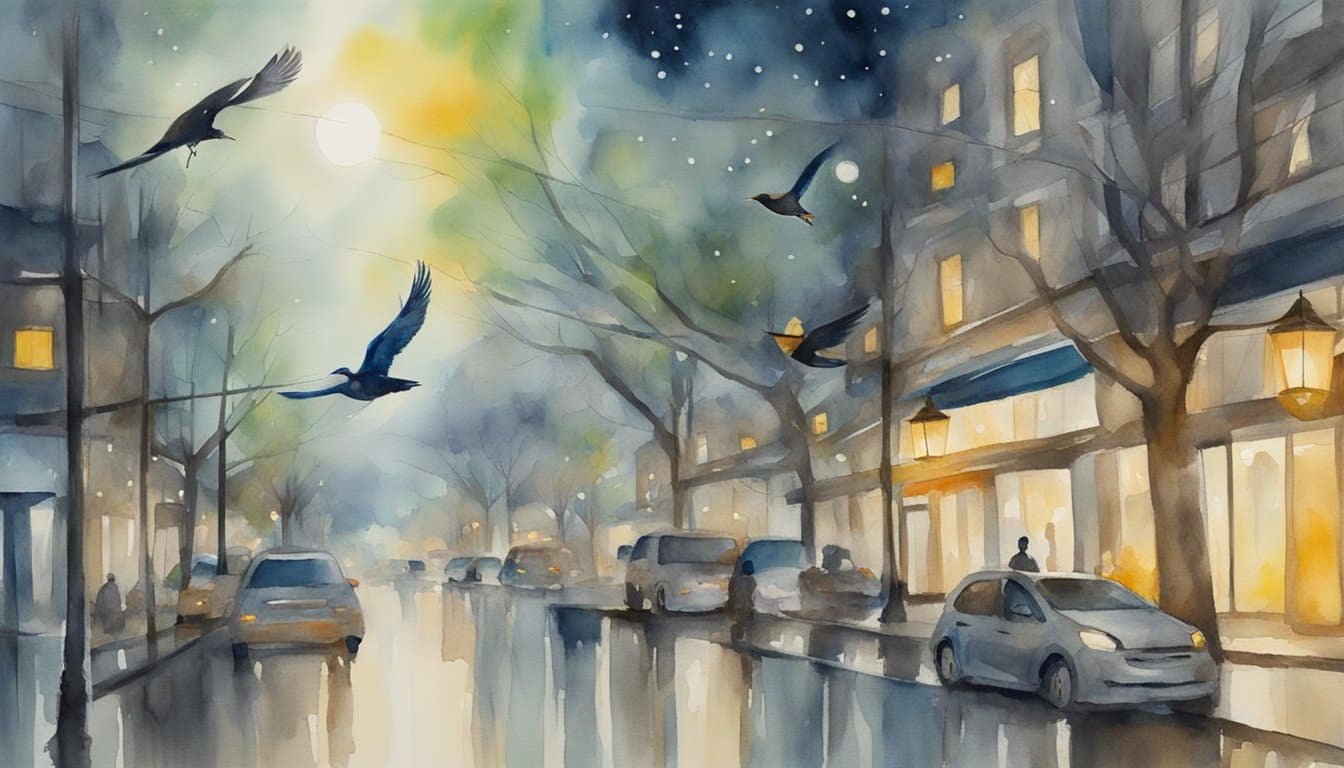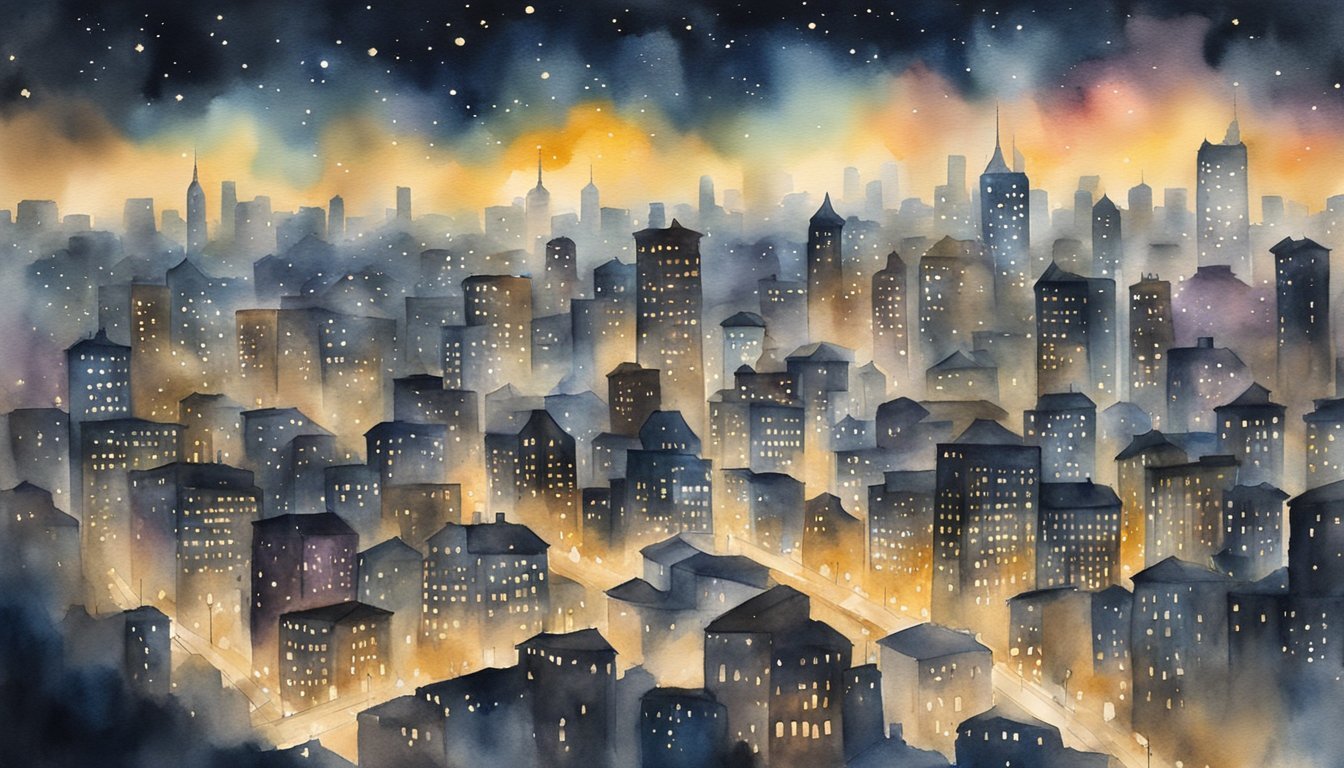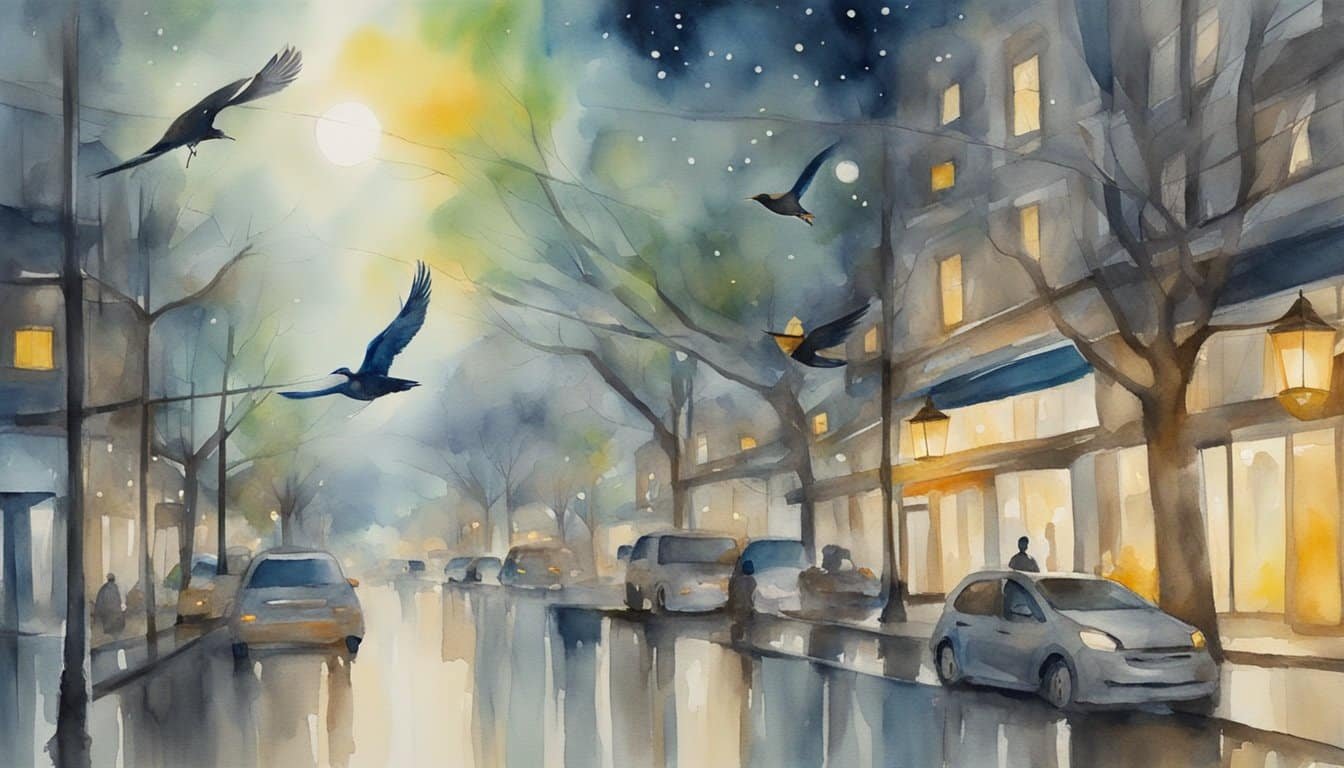Understanding Light Pollution
Light pollution is essentially any artificial light that disrupts the natural environment. This excess light spills into surroundings and has been a growing concern since the advent of electric street lighting in human history. It not only hinders stargazing by causing sky glow, but also has detrimental effects on ecosystems and human health.
There are several components to light pollution:
- Sky Glow: The bright halo that appears over populated areas, dimming the sight of celestial objects.
- Glare: Excessive brightness causing visual discomfort.
- Clutter: Bright, confusing, and excessive groupings of light sources.
Artificial Light and Ecosystems
Artificial lighting, especially LEDs with cooler color temperatures, can confuse animal navigation, alter competitive interactions within ecosystems, and disturb feeding behaviors. Research has illuminated possible links between excessive light at night and disruptions in human circadian rhythms, leading to health issues like obesity and mental health disorders.
Nature’s Lighting
In contrast to artificial lighting, the subtler glows of moonlight and starlight have guided the natural world for eons, playing critical roles in the behaviors of numerous species. For example, sea turtle hatchlings find their way to the sea by moonlight; excessive artificial lighting can mislead them, often with fatal consequences.
To minimize light pollution, there’s a growing movement to advocate for better lighting practices, such as directional street lighting and using bulbs with a warmer color temperature to lessen the impact on human health and ecosystems. Efforts like these help preserve the natural balance of the environment while maintaining the benefits of artificial lighting where it’s needed most.
Discover more about the impact of artificial lighting on the natural world here. For a deeper insight into nighttime light pollution and ecosystems, click this link.
Impacts on Wildlife and Ecosystems

The night sky is not just for stargazing; it’s a vital component of habitats for countless species. Yet, as artificial lights brighten the dark corners of our planet, they bring sweeping changes to the lives of animals and entire ecosystems.
Effects on Animals and Insects
Artificial lighting has significant, often harmful, impacts on wildlife’s daily and seasonal rhythms. Many birds, for instance, use the moon and stars for navigation during migration, but excessive light pollution leads them astray or causes deadly collisions with buildings. For nocturnal creatures like bats and moths, it’s more than just a nuisance; it alters feeding and breeding behaviors, disrupts predator-prey interactions, and affects population dynamics.
Insects, particularly those that are drawn to light like moths, suffer from a phenomenon sometimes referred to as the “vacuum cleaner effect,” where they’re sucked towards an unnatural, bright death. This not only reduces insect populations but also impacts the species that rely on them for food.
The Challenge for Aquatic Life
The glow from coastal developments penetrates deep into the ocean, affecting marine wildlife in profound ways. Sea turtles, which have been navigating the ocean for millions of years, now find their hatchlings disoriented by beachfront lighting, straying away from the safety of the water and towards hazardous inland territories.
Freshwater ecosystems are also not immune to the reach of light pollution. Fish that rely on the cover of darkness for protection or foraging are exposed to predators and competitors, upending the delicate balance maintained by the aquatic food web.
Preservation Efforts
Concerted efforts are being made to protect the nocturnal environment. Organizations like the International Dark-Sky Association are championing the creation of Dark Sky Reserves and advocating for responsible lighting policies that minimize ecological disruption.
Furthermore, government bodies such as the National Park Service are working to limit light pollution within protected areas, maintaining safe havens for migratory birds, bats, and other impacted species. Conservation initiatives are also focused on designing wildlife-friendly lighting and spreading awareness on the importance of preserving our planet’s dark skies not just for the sake of beauty, but for the vitality of nature itself.
Influence on Human Health and Society

Light pollution extends beyond just obscuring the night sky for stargazers – it has significant implications on human health and society. People’s sleep patterns, various health risks, urban lifestyle, and even legal approaches are all intertwined with the way artificial light spills into the environment.
Health Effects and Risks
Artificial light disrupts the production of melatonin, a hormone instrumental in regulating sleep and circadian rhythms. Exposure to light at night, especially blue light emitted by screens and LED lights, can lead to sleep deprivation. This lack of sleep is linked to various health issues, including obesity, diabetes, depression, and even specific types of cancer, such as breast cancer and lung cancer.
Urbanization and Its Consequences
As urban areas expand, the increase in buildings and streetlamps contributes to over-illumination, significantly amplifying light pollution. This urban glow not only affects human residents with issues like stress and fatigue but also disrupts nocturnal wildlife, often leading to harmful ecological consequences.
Navigating the Night
For astronomers, light pollution limits the visibility of celestial objects and diminishes the beauty of the night sky, including sightings of the Milky Way. The impact on night vision can also pose challenges for both humans and animal species that rely on darkness for navigation and survival.
Legal and Societal Measures
Recognizing the effects of light pollution, organizations like The International Dark-Sky Association and American Medical Association advocate for measures to mitigate its impact. Legislation is slowly being implemented to regulate the use of artificial lights, promoting the use of dimmers, timers, and motion sensors to reduce unnecessary light exposure.

